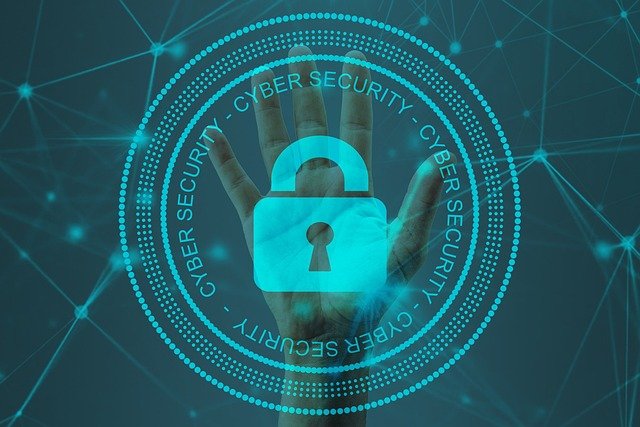Trending Cybersecurity Software: Protect Your Business in 2024
 Image by Pete Linforth from Pixabay
Image by Pete Linforth from Pixabay In an era where digital transformation is accelerating at an unprecedented pace, businesses are more vulnerable to cyber threats than ever before. Cybersecurity is no longer just an IT concern but a critical aspect of business strategy. As we step into 2024, the landscape of cybersecurity software is evolving rapidly, with new tools and technologies emerging to combat sophisticated cyber threats. In this article, we will explore the trending cybersecurity software that can help protect your business, detailing their features, benefits, and how they can be integrated into your existing systems.
The Rise of AI-Powered Cybersecurity Solutions
Artificial Intelligence (AI) has become a game changer in the realm of cybersecurity. As cyber threats grow more complex, traditional methods of detection and response are often inadequate. AI-powered cybersecurity solutions leverage machine learning algorithms to analyze vast amounts of data, identifying anomalies and potential threats in real-time. This capability allows businesses to respond to incidents faster and more effectively, often before the threat can cause significant damage.
One of the most significant advantages of AI in cybersecurity is its ability to learn and adapt. Unlike traditional systems that rely on predefined rules and signatures, AI systems can evolve based on new data and attack patterns. For instance, if a particular type of malware is detected, the AI can analyze its behavior and develop strategies to recognize and counteract similar threats in the future. This proactive approach is essential in a landscape where threats are constantly evolving.
Moreover, AI-driven solutions can automate many mundane tasks associated with cybersecurity, such as log analysis and threat hunting. This automation not only speeds up the detection process but also allows cybersecurity professionals to focus on more strategic initiatives. As a result, businesses can maintain a robust security posture without overwhelming their IT staff, making AI a valuable asset in the fight against cybercrime.
However, while AI offers tremendous benefits, it is not without its challenges. The reliance on AI can lead to complacency among cybersecurity teams, who may assume that the technology will handle all threats. Additionally, AI systems require extensive training data to function effectively, and if that data is biased or incomplete, it can lead to false positives or missed threats. Therefore, businesses must strike a balance between leveraging AI technologies and maintaining human oversight to ensure comprehensive cybersecurity.
Cloud Security Solutions: Safeguarding Data in the Cloud
As more businesses migrate to the cloud, the importance of cloud security solutions has skyrocketed. Cloud environments present unique security challenges, including data breaches, misconfigured settings, and insider threats. To address these concerns, organizations are increasingly adopting cloud security software that provides visibility and control over their cloud assets.
Cloud security solutions typically offer features such as encryption, access controls, and continuous monitoring of cloud resources. These tools help ensure that sensitive data is protected both at rest and in transit, minimizing the risk of unauthorized access. Additionally, many cloud security platforms provide compliance management tools, helping businesses adhere to regulations such as GDPR and HIPAA.
One of the standout trends in cloud security is the rise of Cloud Access Security Brokers (CASBs). CASBs serve as intermediaries between cloud service providers and users, providing an additional layer of security. They enable organizations to enforce security policies, monitor user activity, and detect anomalies in real-time. By implementing a CASB, businesses can gain greater visibility into their cloud usage and enhance their overall security posture.
Despite the advantages, cloud security is not without its pitfalls. Many organizations underestimate the shared responsibility model of cloud security, believing that cloud providers are solely responsible for securing the environment. In reality, businesses must also take proactive steps to protect their data, such as implementing strong access controls and regularly auditing their cloud configurations. By understanding and embracing this shared responsibility, organizations can better safeguard their cloud environments.
Endpoint Protection: Defending Against Targeted Attacks
Endpoints, such as laptops, smartphones, and servers, are often the primary targets for cybercriminals. As remote work becomes more prevalent, the attack surface has expanded, making endpoint protection a critical component of any cybersecurity strategy. In 2024, businesses are increasingly turning to advanced endpoint protection software to defend against a wide range of threats, including malware, ransomware, and phishing attacks.
Modern endpoint protection solutions utilize a combination of techniques, including signature-based detection, behavioral analysis, and threat intelligence. By employing multiple layers of defense, these solutions can effectively identify and mitigate threats before they can compromise the system. Additionally, many endpoint protection platforms offer features such as device control, application whitelisting, and real-time monitoring, providing organizations with comprehensive protection.
One notable trend in endpoint protection is the integration of Extended Detection and Response (XDR) capabilities. XDR solutions provide a holistic view of security events across endpoints, networks, and cloud environments, allowing security teams to correlate data and respond to incidents more efficiently. This integrated approach enables organizations to identify complex attack vectors that may span multiple systems, enhancing their ability to respond to sophisticated threats.
However, implementing endpoint protection software is not a one-size-fits-all solution. Organizations must carefully assess their unique needs and threat landscape to select the right tools. Additionally, employee training and awareness are crucial, as human error remains a significant factor in security breaches. By fostering a culture of cybersecurity awareness and investing in robust endpoint protection solutions, businesses can significantly reduce their risk of cyberattacks.
Threat Intelligence Platforms: Staying Ahead of Cyber Criminals
In the ever-evolving world of cybersecurity, staying informed about the latest threats is paramount. Threat intelligence platforms (TIPs) provide organizations with valuable insights into emerging threats, vulnerabilities, and attack trends. By aggregating and analyzing data from various sources, TIPs enable businesses to make informed decisions about their security posture and proactively defend against potential attacks.
One of the key benefits of using a threat intelligence platform is the ability to enhance incident response capabilities. By leveraging real-time threat data, organizations can quickly identify indicators of compromise (IOCs) and take appropriate action to mitigate risks. This proactive approach not only helps prevent breaches but also minimizes the impact of incidents that do occur.
Additionally, TIPs facilitate collaboration and information sharing among organizations, enhancing collective defense efforts. Many platforms provide access to threat feeds, allowing businesses to stay updated on the latest threats and vulnerabilities. This collaborative approach is particularly important in industries that face similar threats, as sharing intelligence can lead to more effective defense strategies.
However, implementing a threat intelligence platform requires careful consideration. Organizations must ensure that the data they are using is accurate and relevant to their specific environment. Additionally, integrating threat intelligence into existing security operations can be complex, requiring investment in training and resources. By strategically leveraging threat intelligence, businesses can strengthen their security posture and stay one step ahead of cybercriminals.
Security Automation: Streamlining Cybersecurity Operations
As cyber threats become more sophisticated, the need for efficient cybersecurity operations has never been greater. Security automation tools are emerging as a solution to streamline processes, reduce response times, and enhance overall security effectiveness. By automating repetitive tasks, organizations can free up valuable resources and allow security teams to focus on more strategic initiatives.
One of the primary advantages of security automation is the ability to respond to incidents in real-time. Automated systems can detect anomalies, trigger alerts, and initiate response protocols without human intervention. This rapid response capability is crucial in minimizing the impact of cyberattacks and preventing further damage. For example, if a suspicious login attempt is detected, an automated system can immediately lock the account and notify the security team for further investigation.
Moreover, security automation can improve the accuracy of threat detection and response. By reducing the reliance on manual processes, organizations can minimize the risk of human error, which is a common factor in security breaches. Automated systems can analyze vast amounts of data and identify patterns that may indicate a potential threat, enabling businesses to take proactive measures.
However, while automation offers significant benefits, it is essential to maintain human oversight. Automated systems are only as effective as the data they are trained on, and without proper monitoring, they can generate false positives or overlook genuine threats. Therefore, organizations must strike a balance between automation and human expertise to ensure comprehensive cybersecurity.
Conclusion
As we look ahead to 2024, the landscape of cybersecurity continues to evolve, presenting both challenges and opportunities for businesses. The trending cybersecurity software discussed in this article—AI-powered solutions, cloud security tools, endpoint protection, threat intelligence platforms, and security automation—represent the forefront of defense against cyber threats. By adopting these technologies, organizations can enhance their security posture, protect sensitive data, and ensure business continuity in an increasingly complex digital environment.
Investing in cybersecurity is no longer optional; it is a fundamental requirement for any business aiming to thrive in the digital age. By staying informed about the latest trends and technologies, organizations can proactively defend against cyber threats and safeguard their assets. As the threat landscape continues to evolve, embracing innovative cybersecurity solutions will be key to ensuring the safety and security of businesses in 2024 and beyond.
FAQ
1. What is the importance of cybersecurity for businesses in 2024?
Cybersecurity is crucial for businesses in 2024 as cyber threats are becoming more sophisticated and prevalent. Protecting sensitive data, maintaining customer trust, and ensuring compliance with regulations are essential for business continuity and reputation.
2. How can AI improve cybersecurity measures?
AI enhances cybersecurity by providing real-time threat detection, automating routine tasks, and adapting to new attack patterns. It allows organizations to respond more quickly to incidents and reduces the burden on cybersecurity teams.
3. What are the key features to look for in endpoint protection software?
Key features to look for in endpoint protection software include real-time monitoring, behavioral analysis, threat intelligence integration, and device control. These features help organizations detect and respond to threats effectively.
4. How can organizations ensure effective implementation of security automation?
Organizations can ensure effective implementation of security automation by maintaining human oversight, regularly reviewing automated processes, and providing training for staff. Balancing automation with human expertise is essential for comprehensive security.









No Comments